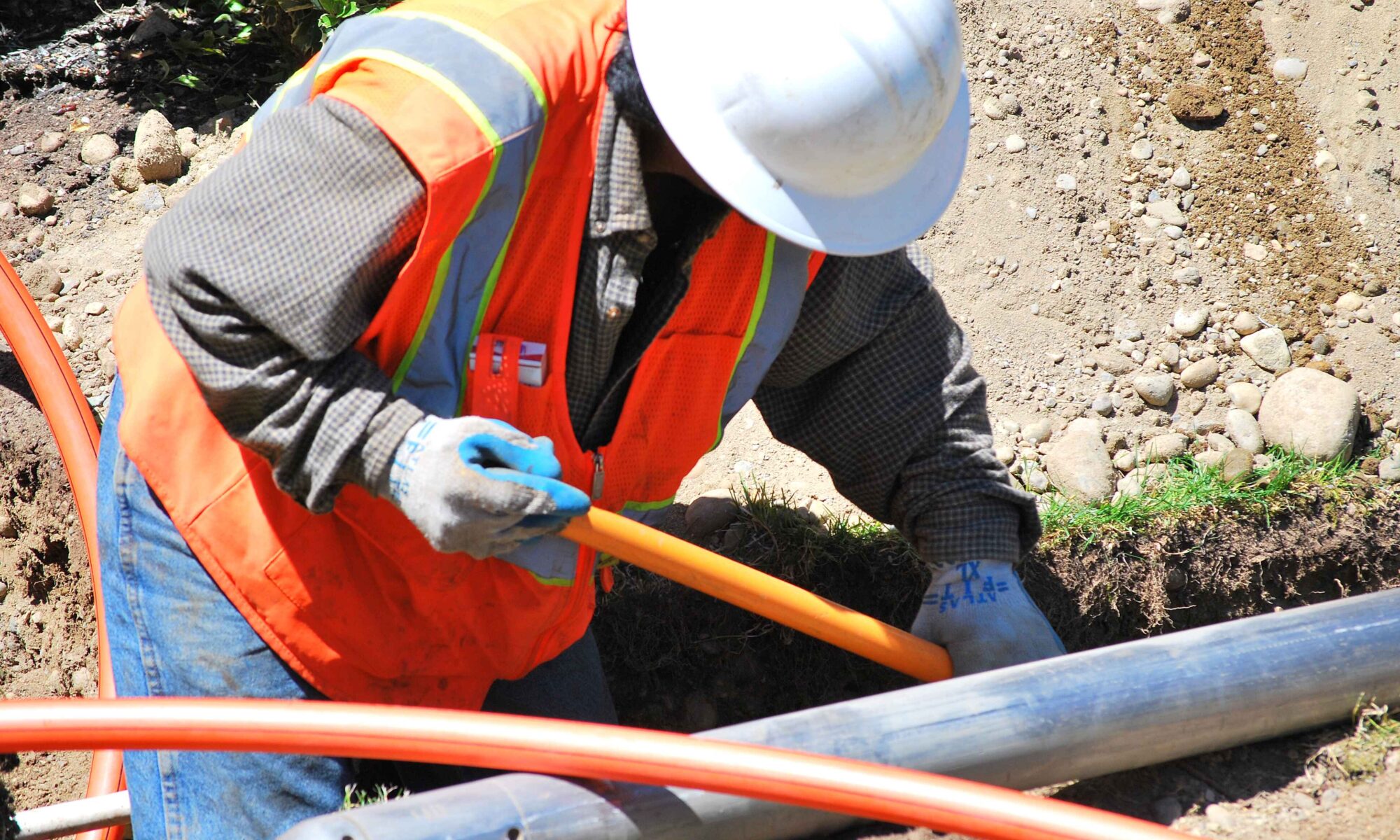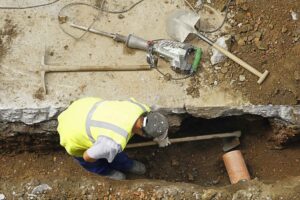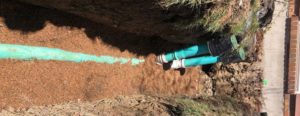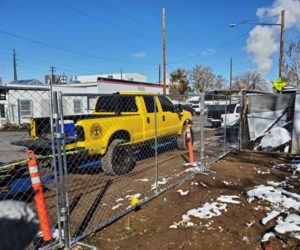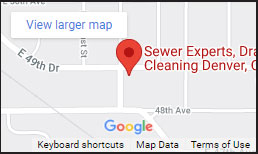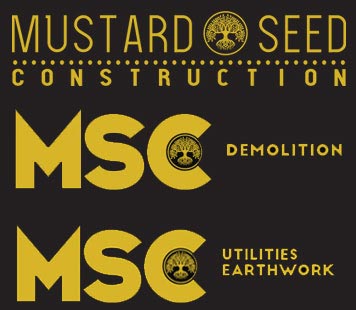Your home depends on a working sewer line. But sewer lines can fail. So you need to know the signs of collapsed sewer line problems. Then you can act fast. Plus, quick action saves you money. It also protects your home from major damage.
I’m Marisa Beaver. I founded Sewer Experts in Denver. We help homeowners with sewer line problems every day. After 20 years in utilities, I know sewer emergencies. Also, I’ve seen what happens when people wait too long. Now, I want to help you spot the signs early.
This guide shows you the top 10 signs of collapsed sewer line issues. You’ll learn what each sign means. Plus, you’ll know what to do next. Most importantly, you’ll protect your Denver home from expensive repairs.
Table of Contents
- Signs of Collapsed Sewer Line: Multiple Drains Back Up
- Broken Drain Pipe Symptoms: Sewage Odors in Your Home
- Sewer Line Failure Denver: Soggy Patches in Your Yard
- Colorado Sewer Emergency: Gurgling Sounds from Drains
- Signs of Collapsed Sewer Line: Slow Draining Throughout House
- Foundation Cracks and Settling Issues
- Lush Green Patches in Your Lawn
- Increased Pest Activity Around Your Home
- Sewage Backup in Basement or Lower Drains
- Mold Growth on Walls and Ceilings
- What to Do When You Spot These Signs
- FAQ: Collapsed Sewer Line Questions
Signs of Collapsed Sewer Line: Multiple Drains Back Up
Multiple drains backing up at once means trouble. This is one of the clearest signs of collapsed sewer line problems. So pay attention when it happens.
Your home’s drain system connects to one main sewer line. All your sinks, toilets, and tubs drain into this line. When the sewer line collapses, nothing can drain properly. Thus, water backs up in multiple places at the same time.
You’ll notice this pattern first. The lowest drains in your home back up before others. Basement floor drains fill with water. Then the problem spreads upward. Next, your first-floor toilet won’t flush. After that, your bathroom sink fills with water. Also, your shower drain stops working.
This differs from a simple clog. A clog affects just one drain. But a collapsed sewer line affects every drain in your house. For example, when you flush the toilet, water comes up in the shower. Or you run the washing machine, and the basement drain overflows.
Why This Happens
Collapsed sewer lines create a physical barrier. Sewage can’t flow past the collapsed section. So it has nowhere to go but back up into your home. The official Denver sewer regulations require that homeowners maintain their sewer lines from the house to the main city line.
Tree roots often cause this collapse. They grow into small cracks in the pipe. Then they expand and crush the pipe completely. Also, old pipes simply wear out over time. Cast iron and clay pipes deteriorate after 50 years or more.
Key Takeaway: Multiple drains backing up at once means your main sewer line has failed. Don’t wait. Call our Denver sewer line repair specialists right away.
Broken Drain Pipe Symptoms: Sewage Odors in Your Home
Sewage smells don’t belong in your home. These odors are serious broken drain pipe symptoms. Plus, they signal an urgent problem with your sewer line.
A healthy sewer system stays airtight. Sewage stays trapped in the pipes. You shouldn’t smell anything except near roof vents. But when a sewer line collapses, that changes fast.
The collapse creates cracks and openings. Sewer gas escapes through these openings. This gas contains methane and hydrogen sulfide. Both smell terrible. Also, both pose health risks to your family.
You might smell these odors in several places. First, near floor drains in your basement. Then near toilets that gurgle when you use other fixtures. Also, you might smell sewage outside near your foundation. In fact, a strong sewage smell outside often means a major collapse.
Health Risks You Need to Know
Sewer gas exposure causes headaches and nausea. Long-term exposure can be dangerous. Plus, sewage contains harmful bacteria. These bacteria spread disease if sewage backs up into your home.
Children and elderly family members face the highest risk. So do people with breathing problems. Therefore, sewage odors require immediate action. Never ignore this sign.
Don’t try masking the smell with air fresheners. That won’t fix the problem. Instead, you need professional help. Our team uses video inspection to find the exact location of the collapse. Then we fix it using modern trenchless sewer repair methods.
Pro Tip: If you smell sewage, open windows for ventilation. Keep children and pets away from the area. Then call us immediately for a 24/7 emergency response.
Sewer Line Failure Denver: Soggy Patches in Your Yard
Wet spots in your yard signal sewer line failure Denver homeowners can’t ignore. These soggy areas appear even when it hasn’t rained. Plus, they often smell bad.
A collapsed sewer line leaks sewage into the ground. This sewage saturates the soil around the break. Your yard becomes swampy in that spot. The grass stays wet even during dry weather. Also, you might notice the ground feels soft when you walk on it.
This symptom gets worse over time. The soggy area grows larger. Then a sinkhole might form. These sinkholes happen because water washes away the soil underneath. Eventually, the ground can no longer support the weight above it.
Denver’s Unique Climate Challenges
Denver’s freeze-thaw cycles make this worse. Water freezes in winter. Then it expands. This expansion creates more stress on damaged pipes. So minor cracks become major collapses. Also, our clay soil shifts frequently. This shifting puts extra pressure on old sewer lines.
Many Denver homes have sewer lines from the 1950s or earlier. These old pipes weren’t designed for modern usage. Plus, they’ve endured decades of ground movement. Now they’re failing at higher rates than ever before.
If you see wet patches near your foundation, act quickly. The moisture can damage your home’s foundation. Foundation repairs cost thousands of dollars. But catching a sewer line collapse early saves you money. Our Denver sewer camera inspection services locate the problem without digging up your entire yard.
Common Mistake to Avoid: Don’t assume wet spots are just from overwatering your lawn. Check if the area smells like sewage. Also, check if it stays wet even when you turn off sprinklers. These signs point to a sewer line problem.
Colorado Sewer Emergency: Gurgling Sounds from Drains
Gurgling drains mean you have a Colorado sewer emergency developing. These strange sounds happen when air gets trapped in your pipes. Then the air forces its way back up through drains.
Normal drains don’t make noise. Water flows smoothly down the pipes. Air vents on your roof release pressure. But a collapsed sewer line disrupts this system completely.
Here’s what causes the gurgling. Sewage can’t flow past the collapsed section. So it creates a blockage. Air behind the blockage has nowhere to go. Thus, it bubbles back up through your drains. You hear this as a gurgling or bubbling sound.
You’ll notice gurgling most often in your toilet. For example, you flush the toilet and hear bubbling. Or you run water in the sink, and the toilet gurgles. Also, the bathtub might gurgle when you use the washing machine. These connected symptoms prove the main sewer line has problems.
When Gurgling Becomes an Emergency
Gurgling starts mild. At first, you hear it occasionally. But it gets worse over time. Then you hear it every time you use water. Finally, sewage starts backing up into your home. This progression can happen in days or weeks.
Don’t wait until sewage overflows. Once gurgling starts, the collapse is already happening. Schedule a sewer line inspection immediately. We use advanced camera technology to see inside your pipes. Then we show you exactly what’s wrong.
Many homeowners ignore gurgling sounds at first. They think it’s just a minor issue. But gurgling is never minor. It’s your sewer system’s way of screaming for help. Take action now before the problem becomes a messy, expensive disaster.
Expert Insight from Marisa Beaver, Sewer Experts Founder: “I tell every homeowner the same thing. Gurgling drains are an early warning system. We can often fix the problem with trenchless repair. But if you wait until sewage backs up, repairs become much more complex and costly.”
Signs of Collapsed Sewer Line: Slow Draining Throughout House
Slow drains throughout your entire house reveal signs of collapsed sewer line damage. One slow drain might be a simple clog. But multiple slow drains point to your main sewer line.
Think about how your drain system works. Every fixture drains into the main sewer line. When that line collapses, drainage slows down everywhere. The water and waste have nowhere to go. So they move very slowly through the damaged pipe.
You’ll notice this in a pattern. First, your basement drains slow down. Then your first-floor sinks take longer to drain. Also, your shower leaves standing water. Plus, your toilet flushes weakly. In fact, you might need to flush twice or three times.
This differs from normal clogs. A plunger won’t fix it. Drain cleaner won’t help either. The problem lies in your main sewer line. So you need professional sewer line repair, not DIY solutions.
What Causes Slow Drainage
Several things cause sewer line collapse and slow drainage. Tree roots are the most common culprit. They grow into the pipe through tiny cracks. Then they expand and block the flow. After that, the pipe collapses from the pressure.
Old age is another major cause. Sewer pipes last about 50 to 80 years. Denver has many homes older than that. These old pipes corrode and weaken. Eventually, they collapse under normal use.
Ground shifting also damages pipes. Denver’s soil moves as temperatures change. This movement stresses pipes over decades. Small cracks become big problems. Then the pipe fails completely.
The EPA guidelines on sewer infrastructure recommend regular inspections for homes over 30 years old. These inspections catch problems before they become emergencies. We offer affordable inspection services for Denver homeowners. Our cameras show you the exact condition of your sewer line.
Key Takeaway: If multiple drains throughout your house are slow, your sewer line needs immediate attention. Don’t try DIY fixes. Call our team for a professional video inspection.
Foundation Cracks and Settling Issues
Foundation cracks and settling are serious signs of collapsed sewer line damage. Many homeowners don’t connect these issues. But leaking sewage undermines your home’s foundation.
Here’s what happens. A collapsed sewer line leaks sewage into the soil. This sewage saturates the ground around your foundation. The saturated soil becomes unstable. Then it can no longer support your home’s weight properly.
You’ll see several warning signs. First, cracks appear in your foundation walls. These cracks start small. But they grow wider over time. Also, you might notice cracks in your basement floor. Plus, doors and windows stick or won’t close properly. These are all signs your foundation is settling.
Water damage appears inside too. Your basement walls might show water stains. Mold grows in damp corners. The floor feels damp even when it’s dry outside. All these symptoms connect to the leaking sewer line.
The Cost of Waiting
Foundation repairs cost between $10,000 and $30,000 in Denver. That’s on top of sewer line repair costs. But catching the sewer line problem early prevents foundation damage. So you save tens of thousands of dollars.
Structural damage gets worse fast. Small cracks become large gaps. Minor settling becomes major shifts. Eventually, your entire home’s structure becomes compromised. Then you face even bigger repair bills.
We’ve worked with the Denver Housing Authority on thousands of properties. We’ve seen what happens when foundation problems go unchecked. The damage compounds year after year. Finally, the repair costs become overwhelming. Don’t let this happen to your home.
Our trenchless sewer repair technology fixes sewer lines without major excavation. We can reline your existing pipe from inside. This method saves your landscaping. It also costs less than traditional dig-and-replace methods. Plus, we complete most repairs in one or two days.
What This Means for You: Foundation cracks connected to sewer problems require immediate professional help. Contact us for a free inspection. We’ll determine if your sewer line is causing the damage.
Lush Green Patches in Your Lawn
Surprisingly lush green grass patches reveal hidden sewer line problems. Most people think healthy grass is good. But isolated super-green areas tell a different story.
Sewage acts as fertilizer. When your sewer line collapses and leaks, sewage seeps into the soil. Plants absorb these nutrients. So the grass grows faster and greener than surrounding areas. This creates obvious patches of difference in your lawn.
These patches appear suddenly. One week your lawn looks uniform. The next week, you notice an extra-green section. The grass grows taller faster in that spot. You have to mow it more often. Also, the area might feel softer when you walk on it.
This symptom appears with other signs too. The green patch might also be soggy. You might smell sewage in that area. Plus, the grass in that spot might attract more insects. All these signs together confirm a sewer line problem.
Denver Landscaping Considerations
Denver’s semi-arid climate makes this sign easier to spot. Most lawns need regular watering to stay green. But a section getting “fertilized” by sewage stays green without extra water. This difference becomes very obvious during dry spells.
Many Denver homes have mature trees in the yard. These trees cause many sewer line problems. Their roots search for water and nutrients. So they grow toward and into sewer pipes. This root intrusion eventually collapses the pipe. Then sewage leaks right at the base of the tree.
If you notice extra-green grass near trees, inspect that area carefully. Look for other signs like soft soil or sewage odors. Then call us for a professional inspection. We can determine if tree roots have damaged your sewer line. We’ll also recommend solutions that protect both your trees and your pipes.
Pro Tip: Take photos of your lawn throughout the year. Compare them month to month. This helps you spot changes like new green patches. Early detection means easier repairs.
Increased Pest Activity Around Your Home
Increased pest activity signals serious sewer line problems. Rats, mice, and insects live in sewer systems. When pipes collapse, these pests find ways into your home.
Rodents travel through sewers all the time. They’re searching for food and shelter. Intact sewer pipes keep them contained underground. But a collapsed pipe creates openings. Then rats and mice squeeze through even tiny cracks. Soon they’re in your basement or crawl space.
You might notice droppings first. Rat droppings appear in basements or near floor drains. Also, you might hear scratching sounds in walls. Plus, you’ll see gnaw marks on stored items. These signs mean rodents have found a way inside.
Insects present problems too. Cockroaches thrive in sewers. They crawl through collapsed pipes into your home. Also, sewer flies breed in stagnant sewage water. These flies are small and dark. They appear suddenly in large numbers. Plus, they’re hard to eliminate because they keep breeding in the broken pipe.
Health Risks from Pest Intrusion
Pests from sewers carry diseases. Rats spread leptospirosis and hantavirus. Cockroaches trigger allergies and asthma. Sewer flies indicate unsanitary conditions. All these pests threaten your family’s health.
Many homeowners call exterminators first. The exterminator kills visible pests. But more keep coming. That’s because the source remains: the broken sewer line. You must fix the pipe to stop the pest invasion permanently.
We’ve seen this pattern hundreds of times. Homeowners fight pests for months. They spend money on exterminators. Nothing works. Then we inspect their sewer line. We find a collapsed section. We repair it. Then the pest problem disappears.
Don’t waste money treating symptoms. Address the root cause. Call us for a sewer line inspection. We’ll determine if a pipe problem is letting pests inside. Then we’ll fix it right the first time.
Common Mistake to Avoid: Don’t assume pest problems are unrelated to plumbing. If extermination doesn’t work long-term, check your sewer lines. The pests are coming from somewhere. A collapsed sewer line provides the perfect entry point.
Sewage Backup in Basement or Lower Drains
Sewage backup in your basement is the most obvious sign of collapsed sewer line failure. This is a true emergency. Sewage contains dangerous bacteria and viruses. It poses serious health risks to everyone in your home.
Basement backups follow a pattern. First, lower drains start backing up. Floor drains fill with wastewater. Then the basement toilet overflows. After that, sewage appears in basement sinks or utility tubs. The problem escalates quickly from there.
You’ll see dark, foul-smelling water. It might contain toilet paper and waste. The smell becomes overwhelming. Plus, the backup gets worse when you use water upstairs. For example, flushing an upstairs toilet makes the basement flood more.
This happens because sewage has nowhere to go. The collapsed section blocks everything. So waste backs up to the lowest point in your home. That’s always the basement. Once backup starts, the situation becomes urgent. Every minute counts.
Immediate Steps to Take
First, stop using all water in your home. Don’t flush toilets. Don’t run sinks or showers. Don’t use the washing machine. Every drop you use makes the backup worse.
Second, keep everyone away from the sewage. It’s toxic. Children and pets face the highest risk. Sewage exposure can cause serious illness. Also, sewage can damage your belongings permanently.
Third, call us immediately. We offer 24/7 emergency sewer repair service throughout Denver. We’ll arrive quickly with the equipment needed. We’ll locate the collapse using video inspection. Then we’ll determine the best repair method.
Many sewage backups require immediate cleanup too. Raw sewage contaminates everything it touches. Carpets, drywall, and stored items may need disposal. Professional cleanup services prevent mold growth and eliminate health hazards.
Our team has handled countless sewage emergencies in Denver. We understand how stressful this situation is. We work fast to stop the backup. Then we repair your sewer line so it never happens again. Plus, we work with your insurance company to document everything for claims.
Expert Insight from Marisa Beaver, Sewer Experts Founder: “Sewage backups are frightening. But stay calm. Stop using water. Call us right away. We’ve handled emergencies far worse than yours. We’ll fix it fast and get your life back to normal.”
Mold Growth on Walls and Ceilings
Mold growth on walls and ceilings reveals hidden sewer line damage. Many homeowners don’t connect mold to sewer problems. But leaking sewage creates perfect conditions for mold.
A collapsed sewer line leaks wastewater into the surrounding soil. This moisture seeps through foundation walls. It also rises through cracks in basement floors. Then it creates damp conditions behind walls and under floors.
Mold needs three things: moisture, warmth, and organic material. Your home provides all three. The leak provides constant moisture. Your heated home provides warmth. Drywall and wood provide organic material. So mold grows rapidly.
You might notice several signs. First, dark spots appear on basement walls. These spots grow larger over time. Also, you might see fuzzy growth in corners. Plus, you’ll smell a musty odor. This smell indicates active mold growth. In fact, you might smell the mold before you see it.
Health Impact of Mold Exposure
Mold causes respiratory problems. People with asthma or allergies suffer most. Symptoms include coughing, wheezing, and difficulty breathing. Also, some people develop skin rashes. Plus, mold exposure can trigger severe allergic reactions in sensitive individuals.
Black mold is particularly dangerous. It produces toxins that cause serious health problems. Children, elderly people, and those with weakened immune systems face the highest risk. Therefore, any mold growth requires immediate attention.
Fixing mold requires fixing the source. You can clean visible mold. But it returns if moisture continues. The CDC guidelines on mold remediation emphasize eliminating moisture sources first. That means repairing your collapsed sewer line.
We’ve helped hundreds of Denver homeowners solve mold problems. First, we repair the sewer line. This stops the leak. Then the area dries out naturally. After that, professional mold remediation removes the existing growth. Finally, the mold problem is solved permanently.
Don’t ignore mold growth. It damages your home’s structure. It also threatens your family’s health. Call us for a sewer line inspection. We’ll determine if a pipe leak is causing your mold problem.
Key Takeaway: Persistent mold growth often connects to plumbing problems. Get your sewer line inspected if mold keeps returning after cleaning.
What to Do When You Spot These Signs
You’ve learned the top 10 signs of collapsed sewer line problems. Now you know what to do next. Quick action saves you money. It also protects your home from serious damage.
Follow these steps immediately. First, stop using water if you see sewage backup. Every flush makes the problem worse. Next, document what you see. Take photos of soggy areas, foundation cracks, or mold growth. This documentation helps with insurance claims later.
Then, call our emergency line at (720) 663-7473. We’re available 24/7 for Colorado sewer emergencies. Our team responds quickly throughout Denver and the Front Range. We serve Aurora, Lakewood, Thornton, Arvada, Westminster, and surrounding areas.
Our Professional Repair Process
We start with a video camera inspection. This shows us exactly what’s wrong. The camera travels through your sewer line. It reveals cracks, collapses, and root intrusions. You’ll see the problem on our monitor. So you’ll understand what needs repair.
Next, we explain your options. Many sewer line repairs don’t require digging. Our trenchless repair methods reline pipes from inside. This saves your landscaping. It also costs less than traditional replacement. Plus, the repair lasts 50 years or more.
For severe collapses, we might recommend pipe bursting. This method breaks the old pipe while installing a new one. It requires minimal digging. Most repairs finish in one or two days. Then your sewer system works better than ever.
We’re licensed, insured, and bonded. Our team has over 20 years of experience. We’re locally owned and operated. Plus, we’re the preferred vendor for major Denver property management companies. We also hold an on-call contract with Denver Housing Authority for over 19,000 homes.
Cost and Insurance Considerations
Sewer line repairs vary in cost. Simple relining might cost $3,000 to $7,000. Complete replacement costs more. But waiting makes everything more expensive. Foundation repairs cost tens of thousands. Sewage cleanup costs thousands more.
Some homeowner’s insurance covers sewer line repairs. Coverage depends on your policy and the cause of damage. We’ll help you document everything for insurance claims. We’ve worked with every major insurance company. We know what they require.
Many customers ask about financing. We offer payment plans for qualified homeowners. Don’t let cost prevent you from fixing a dangerous sewer line problem. We’ll work with you to find an affordable solution.
Schedule your free inspection today. We’ll send an experienced technician to your home. They’ll assess your sewer line condition. Then they’ll provide a detailed estimate. You’ll know exactly what’s wrong and what it costs to fix.
Ready to Fix Your Sewer Line Problem?
Don’t wait for a complete sewer line collapse. The signs are clear. Multiple slow drains, sewage odors, and soggy yards all point to serious problems. Plus, foundation cracks and mold growth mean the damage is spreading.
Call Sewer Experts today at (720) 663-7473. We’ll schedule your video inspection right away. Our experienced team serves all of Denver and the Front Range. We’re available 24/7 for emergencies. Plus, we offer free estimates on all sewer line repairs.
Visit our services page to learn more about our trenchless repair technology. Or contact us through our website at info@sewerex.com. We’re here to help protect your home and restore your peace of mind.
Frequently Asked Questions
How much does it cost to fix a collapsed sewer line in Denver?
Repair costs range from $3,000 to $15,000 in Denver. The cost depends on several factors. First, the severity of the collapse matters. Also, the pipe’s location affects cost. Plus, the repair method you choose changes the price. Our team provides free estimates after a video inspection. Then you’ll know exactly what your repair will cost.
Can I prevent sewer line collapse?
Yes, regular maintenance prevents most collapses. Schedule sewer inspections every three to five years. Also, avoid flushing wipes and feminine products. Plus, have tree roots cleared professionally. These steps extend your sewer line’s life significantly. Prevention costs far less than emergency repairs later.
How long does sewer line repair take?
Most trenchless repairs finish in one to two days. Traditional excavation takes three to five days. But exact timing depends on the damage extent. Also, weather can affect outdoor work. We’ll give you a clear timeline after inspecting your sewer line. Then you can plan accordingly.
Will my homeowner’s insurance cover sewer line repair?
Coverage varies by policy and damage cause. Some policies cover sudden collapses. But they don’t cover normal wear and tear. Review your policy carefully. Or call your insurance agent. We’ll provide documentation to support your claim. Many of our customers get partial or full coverage.
What happens if I ignore the signs of collapsed sewer line?
Ignoring signs leads to catastrophic failure. Sewage backs up into your home. Foundation damage worsens. Mold spreads throughout walls. Repair costs multiply dramatically. Also, you risk serious health hazards. Address sewer problems immediately when you spot warning signs. Early repairs are always cheaper than emergency fixes.
Step-by-Step: What Happens During a Sewer Line Collapse
Understanding the Sewer Line Collapse Process:
- Small cracks form in your sewer pipe from age or stress.
- Tree roots detect moisture and grow toward these cracks.
- Roots penetrate the pipe and expand inside the line.
- The pipe weakens further as roots grow thicker each year.
- Soil shifts during freeze-thaw cycles stress the weakened pipe.
- The damaged section begins sagging under ground pressure above.
- Drainage slows as the pipe’s interior space narrows significantly.
- The pipe wall cracks or breaks from the combined stress.
- Soil washes into the pipe through the new break.
- The entire section collapses and blocks all sewage flow completely.
Quick Reference: What Is a Collapsed Sewer Line?
A collapsed sewer line occurs when your underground sewage pipe breaks or caves in completely. The pipe can no longer carry waste away from your home. So sewage backs up into your drains. Also, it leaks into surrounding soil. This creates health hazards and property damage. Most collapses happen in pipes over 50 years old. Tree roots, corrosion, and ground movement cause most failures. Professional repair requires excavation or trenchless relining methods.

